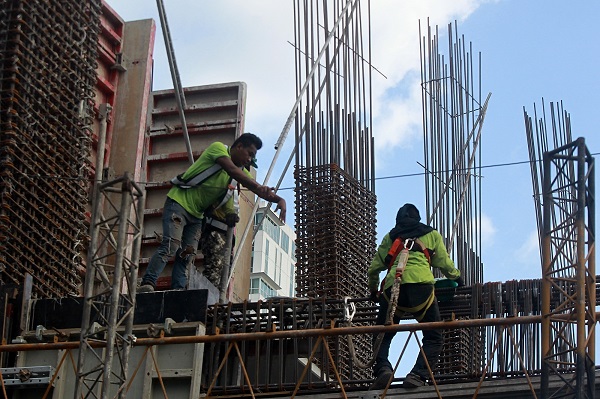New Delhi, Impacted by a consumption slowdown, India’s economy faces another peril, that of rising trade protectionism, which, along with tensions in the Middle East, will hamper merchandise exports and widen the trade deficit, as it did in April.
The fact that India has had a trade deficit since 1988 might not come as a surprise, for unlike its east Asian neighbours, the country relies more on internal consumption for its economic growth.
But a wider trade deficit, at this time, will come as a double whammy for the economy which already faces slowdown in internal consumption.
The trend seems to continue with April data showing a widening gap.
However, the data from 1988 to 2018 shows that overall trade balance as a percentage of the GDP has come down substantially.
“The data clearly suggest that the trade deficit is primarily on account of imports of intermediary products and not the finished goods,” Export Promotion Council of India Chairman Mohit Singla told IANS.
“The trend also suggest that slowly, we are moving away from non-renewable energy to renewable energy sources, which depicts, that in time to come, our import bill owing to import of oil will be much less.”
Singla also said that “due to sustained efforts of the government”, finished products have been replaced by intermediary products which will definitely reduce India’s trade deficit.
According to Madhavi Arora, Lead Economist, Edelweiss Securities, global growth is likely to remain patchy, implying weaker exports demand and weaker manufacturing production.
“With India’s exports now more demand and income sensitive, slower global growth will hit exports growth as well. With trade losing its shine as an engine of global growth, some economies are also looking inward to spur up domestic demand.
“Besides, to give boost to exports, the country needs to work on its competitiveness, thus implying focusing on improvement in productivity of all factors of production rather than simply relying on exchange rate as a lever for exports boost,” she said.
In April, India’s merchandise exports inched up 0.64 per cent, on a year-on-year basis to $26.07 billion from $25.91 billion in the corresponding month of last year.
On the other hand, imports grew by 4.48 per cent to $41.40 billion, from $39.63 billion reported in the corresponding month of 2018.
Segment-wise, oil imports in April were $11.38 billion, which was 9.26 per cent higher in dollar terms, compared to $10.41 billion in April 2018.
Additionally, the trade deficit during the month under review widened to $15.33 billion as against the deficit of $13.72 billion in April 2018.
Nonetheless, on an overall basis, India’s exports including merchandise and services in April are estimated to have grown by 1.34 per cent to $44.06 billion over April 2018.
Commenting on April’s data, Federation of Indian Export Organisations (FIEO) President Ganesh Kumar Gupta said that $26.07 billion with a growth of 0.64 per cent “is not at all encouraging as almost all the labour-intensive sectors, including leather and leather products, gems and jewellery, engineering goods… dominated by MSMEs, are into negative territory”.
“These sectors are still facing the problem of liquidity besides various other challenges, including the global trade war, protectionism, fragile global conditions and constraints on the domestic front,” Gupta was quoted as saying in a statement.
Besides, he expressed his concerns on the rising trade deficit primarily on account of swelling crude and gold import bills.
In addition, the FIEO chief opined that with rising trade tensions between US and China, the global trade scenario may further worsen, putting more pressure on Indian exports in months to come.








